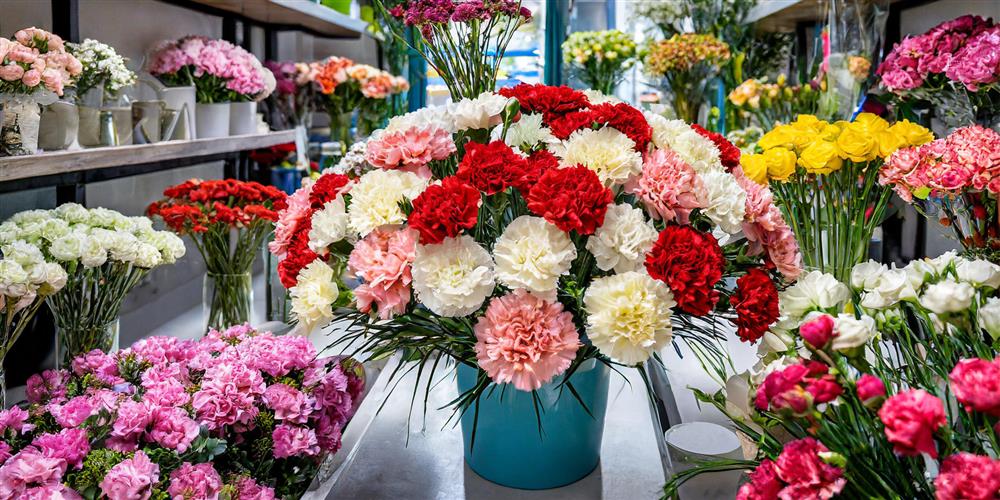Carnations, cherished since the time of the Ancient Greeks, continue to impress us with their lush beauty and versatility. Recognised as a bouquet staple, carnations are revered for their ruffled petals and a wide spectrum of colours, each bearing its own distinct symbolism and meaning.

The carnation's enduring appeal lies not just in its aesthetic beauty but also in the depth of significance. For instance, red carnations symbolise love and admiration, making them a popular choice for expressing romantic feelings.
White carnations, on the other hand, represent purity and good luck, often featured in bouquets to signify new beginnings or to offer well wishes.
Pink carnations have a particularly rich history; they're believed to have first bloomed from the Virgin Mary's tears, symbolising a mother's undying love.
Beyond these familiar shades, carnations come in a variety of other colours, each adding its own unique message to an arrangement. Yellow carnations convey disappointment or rejection, while purple ones signify capriciousness. Striped carnations, with their mix of hues, are said to express regret or refusal.
Understanding the meanings behind carnation colours can add layers of sentiment to floral gifts, allowing the giver to communicate more nuanced emotions and messages. Whether celebrating a significant milestone, expressing affection, or simply bringing a burst of colour into someone's day, carnations offer a special blend of beauty and symbolism.
Their low maintenance and long vase life only add to their appeal, making carnations a practical as well as a beautiful choice for floral arrangements. This combination of aesthetic versatility, rich symbolism, and practicality ensures that our fascination with carnations will continue to flourish, keeping them a beloved flower in bouquets around the world.
10 Fascinating Facts About Carnations You Probably Didn't Know
- January Birth Flower: Celebrate January birthdays with a vibrant bunch of carnations, the month’s official flower.
- 1st Wedding Anniversary Symbol: Mark your first year of marriage with red carnations, symbolising deep love and affection.
- Edible Beauty: Carnations aren't just for looking; their petals can adorn bakes or add a fancy touch to salads.
- Victorian Love Codes: In an era before digital dating, carnations were part of a floral language of love, where colours conveyed secret messages.
- Divine Origins: The name 'Dianthus' combines 'dios' (Zeus) and 'anthos' (flower), earning it the title "flower of the gods."
- Academic Tradition: Oxford students wear carnations to exams - white for the first, pink for the middle, and red for the last, symbolising hope, ongoing effort, and success.
- Medicinal Uses: Beyond beauty, carnations have been used to address skin issues, muscle tension, and even as an anti-inflammatory.
- Symbol of Mourning in France: In France, carnations are often chosen for funeral arrangements, highlighting their deep cultural significance.
- National Pride: Celebrated as the national flower of Spain, Monaco, and Slovenia, carnations hold a special place in the heart of these countries.
- Parents Day in South Korea: A tradition where children give their parents red and pink carnations as a gesture of love and appreciation.

